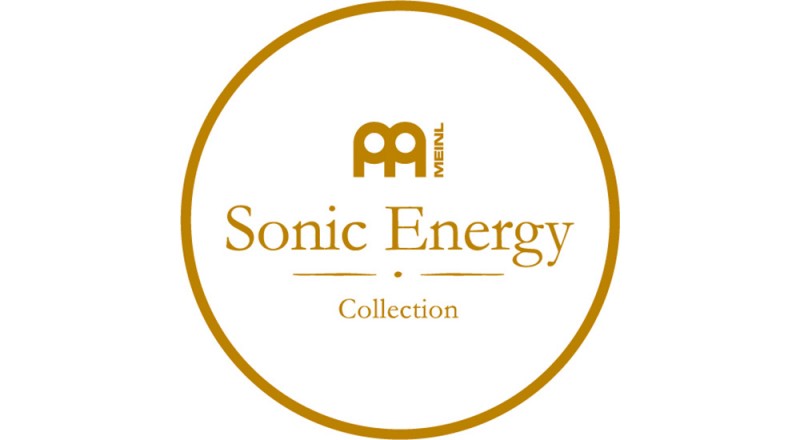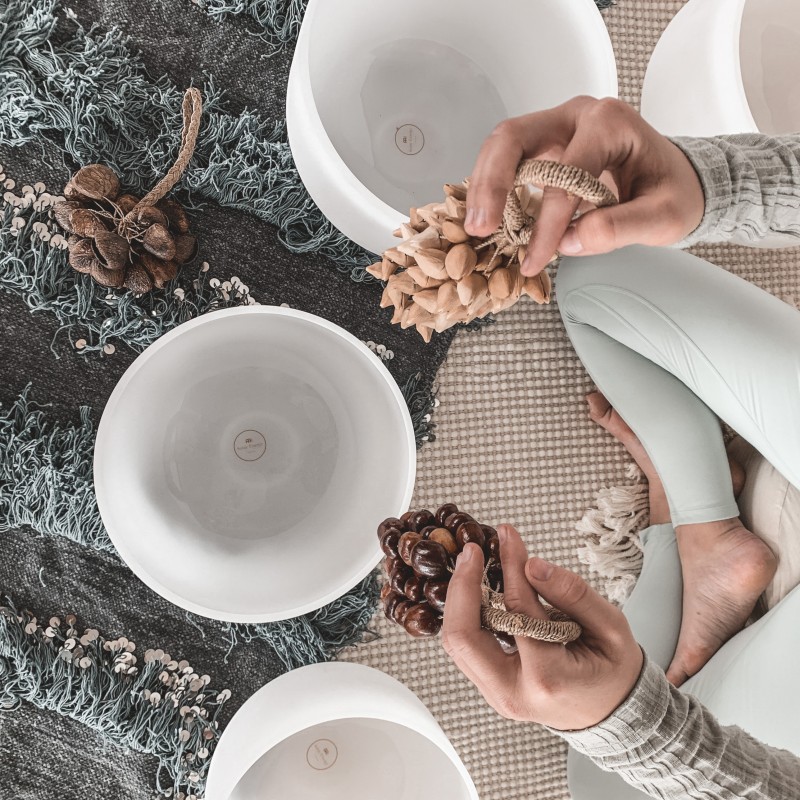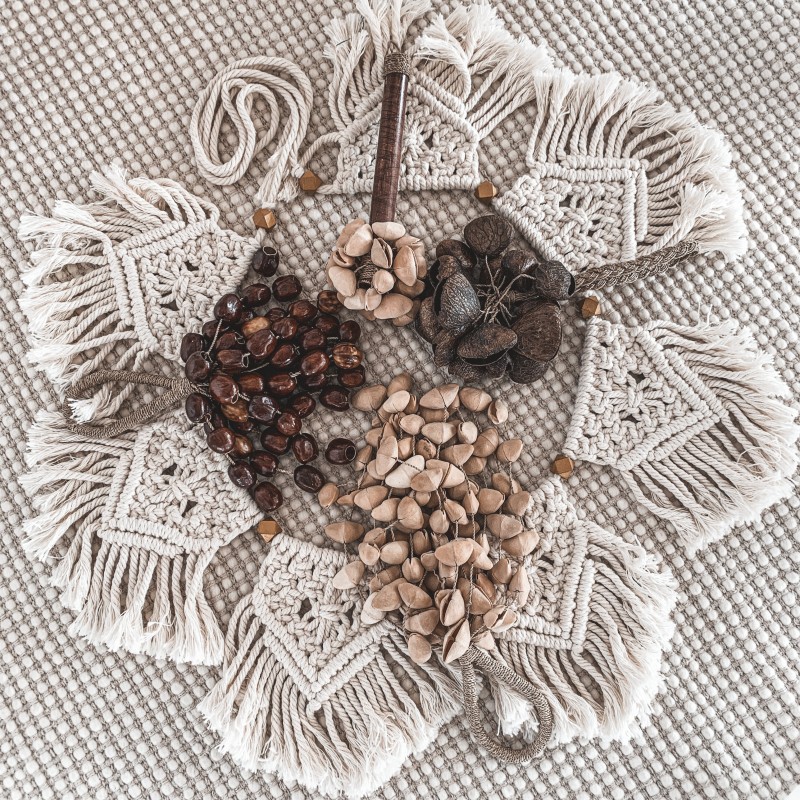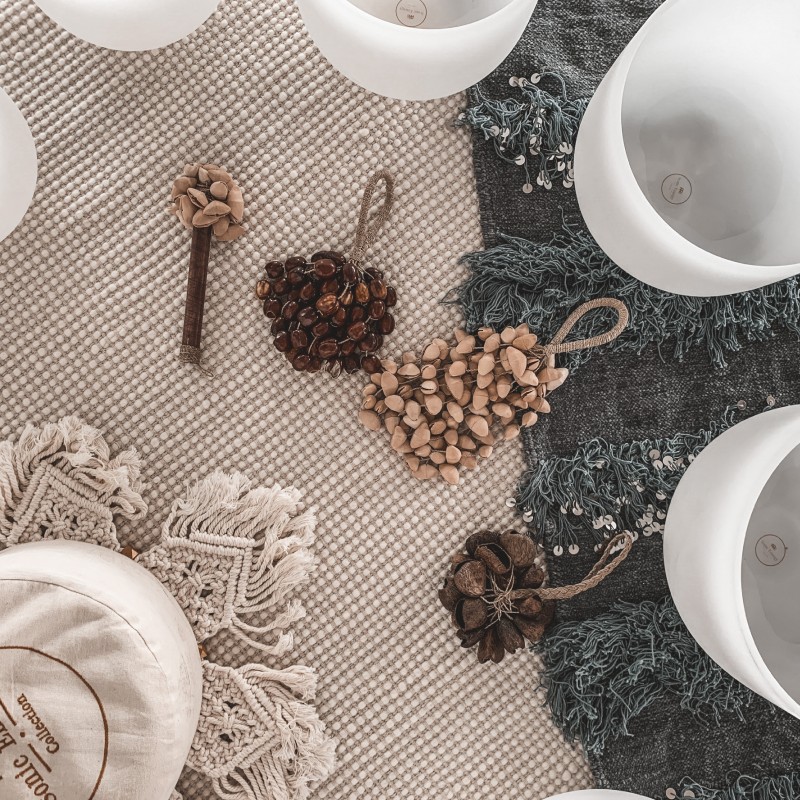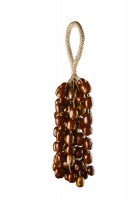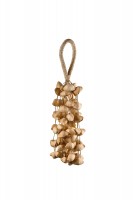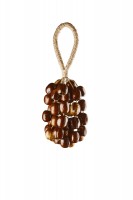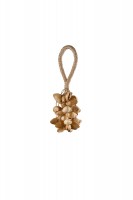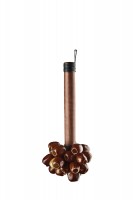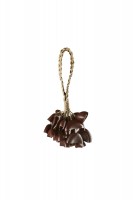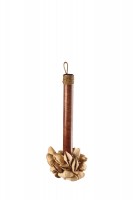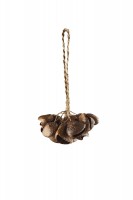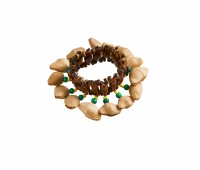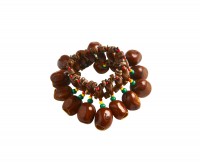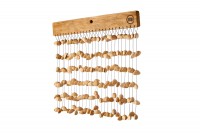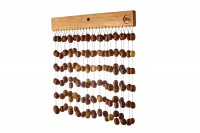KNOW WHERE IT COMES FROM
MEINL SONIC ENERGY NUTSHELL SHAKER AND THEIR ORIGIN
Today, as consumers, we demand more and more transparency about the things we consume or buy (be it food, clothes or musical instruments). We want to know where goods come from, what ingredients and materials they contain, and what their origin is.
Therefore, on this point we want to give you more in-depth information about the main raw material of the Meinl Sonic Energy Shakers, the nutshells or seeds. All Meinl Sonic Energy Nutshell Shakers are manufactured in Indonesia, where a large part of the nutshells respectively seeds come from.
The Nutmeg
Contrary to the assumption that the nutmeg is a nut, the nutmeg is the seed of a fruit. The fruit is yellow, peach-like and hangs on the Nutmeg Tree (Myristica fragrans). This usually grows five to 18 meters high and are most common on the Banda Islands, a group of islands in eastern Indonesia.
When the fruit bursts open at ripening time, the roundish fruit kernel, about 3 cm in size, surrounded by a reddish seed coat (mace) becomes visible. As the kernel dries, the oily seed separates from the shell on the inside. Finally, the seeds are cracked open and laid out to dry again. Ultimately, the seed of the fruit - the nutmeg - can be used as a spice.
Pala is the Indonesian name for nutmeg, hence the name Pala Shaker or Pala Chimes. For the production of the Meinl Sonic Energy Pala Chimes, Pala Shaker, Pala Rod Shaker and Pala Bracelets, the dried shells of the fruit seed are used.
The Lucky Nut
The material of our Meinl Sonic Energy Kenari Shakers, Kenari Bracelets and Kenari Chimes comes from a tree, which is known in Indonesia as Ginje and in technical jargon as Thevetia peruviana or synonymously as Cascabela thevetia. The German trivial name of this 4- to 6-meter-high evergreen plant is Tropical Oleander or Caribbean Oleander.
This name is very appropriate, because purely in appearance, the Ginje Tree with its long pointed, willow-like leaves resembles an oleander bush. The ornamental plant has its origin in Mexico and South America. At flowering time from May to December, the plant is particularly beautiful to look at with its yellow, funnel-shaped flowers.
The fruits of Thevetia peruviana can be visually imagined as follows: Globular, 2.5 to 4.5 cm in diameter, green at first, deep red to black in ripe state. When opening the fruit, one encounters 2-4 seeds or fruit kernels, enclosed in a flattened, beige-brown, broadly triangular to crescent-shaped stone core (also called Lucky Nut). All parts of the fruit are poisonous to humans and not suitable for consumption. Rather, the hard, dried stone seed shells were used by Native Americans to make rattles and jingles. In the same way, Meinl Sonic Energy makes use of these stone kernels in the production of its Kenari Shakers, Kenari Bracelets and Kenari Chimes. In South America today, the cores continue to be considered lucky charms and are often worn as jewelry.
The Pangi Seed
For the production of the Meinl Sonic Energy Pangi Shaker, the seed pods of the fruit from the Pangi or Kepayang Tree (called Pangium edule in technical jargon) are used. It is a 25-40 meter tall evergreen tree, which is native to Southeast Asia.
The fruits of the Pangi Tree are egg to pear shaped, brownish and can weigh up to 2.5 kg each. Their appearance resembles that of a shelled coconut. Inside are 15 to 30 nut-like, thick-shelled, seeds (also called Keluak) with a soft, cream-colored kernel. Only after cooking and subsequent burial in ash, soil or straw do the seeds acquire their dark brown to black color and can be used as a spice in Indonesian and Malay cuisine.
The Benda Tree Seed
The Meinl Sonic Energy Bendo Shaker is made from the fruit seeds of the Bendo Tree, better known as Benda Tree in Indonesia, where the Shaker is produced.
The scientific name of the tree from which these seeds originate, is Artocarpus elasticus. In Malaysia, this is also colloquially known as Terap. The Artocarpus elasticus is a subgenus of the breadfruit trees, which are grouped under the Artocarpus species and whose genus includes, among others, the jackfruit.
The Benda Tree is primarily cultivated in Java, Kalimantan/Borneo, Malaysia, Myanmar, Thailand and Indonesia.
Visually, Artocarpus elasticus can be identified by its extraordinarily large leaves, which can measure up to 60 x 35 cm. At maturity, a tree bears up to 200 fruits. These are about 17 x 10 cm in size, oval to cylindrical, yellowish-brown in color and covered with short, white spines. They contain the Benda Seeds, coated with white pulp.
The pulp of the seeds can be eaten raw and has a sweet taste similar to marshmallows. The ripe seeds themselves must first be washed and then fried or roasted before consumption, as they are poisonous when raw. The oil from the seeds is popularly used as hair oil in the growing regions. There are also a number of other local uses for the components of Artocarpus elasticus. For example, the wood is used to build boats, the large leaves are used to cover roofs, and the milky juice of the stems (so called Pulut) is used to catch birds.
Meinl Sonic Energy is a collection of instruments that supports our connection to experience the body, mind and energy, as One. Many practitioners and guides within the health and wellness industry use these instruments therapeutically for stress management, anxiety relief, insomnia, depression, addictive recovery, pain management, etc. They are unique expressions of the vibrations we encounter on a daily basis and when listened to closely, seem to have a language all their own. They invite us to appreciate the definition of all things we find harmonious in our life and through this support, our journey begins toward new peace and restoration. Our collection of beautifully crafted creations makes self-discovery through sound a simple, profound practice.

